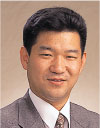 |
 |
Professor |
Assistant Professor |
- Matrix-theoretic high-performance algorithm construction, with application to the numerical computation of critically important quantities associated with difficult special functions occurring from 3-D wave equations, such as regular Coulomb wave functions, Mathieu functions, spheroidal wave functions, Lame functions, ellipsoidal wave functions. The Bessel function of the first kind, an easier function serves as a model case, where two types of computational problems were solved in the complex domain as well as real domain: given a complex order Bessel function, compute a given number of zeros closest to the origin to a specified accuracy; and given a complex number find a specified number of orders of Bessel functions closest to the origin, to a specified accuracy. There are no comparable algorithms known elsewhere which give as accurate an error estimate as ours.
- Construction of hyper English word study dictionary: it is available at http://hidic.u-aizu.ac.jp/. This represents a long-range project, aiming at compiling a database for the study of English words for Japanese students. The main feature is that the dictionary is organized to bring out the best fruits of comparative linguistics in the past century: the usefulness of Indo-European roots as presented in the wonderful book by Calvert Watkins, The American Heritage Dictionary of Indo-European Roots, Second Edition, HoughtonMiffin, 2000. Example: The organizing principle of the dictionary will tell you that the following words are best studied as a group: riddle, garble, crime, decree, discern, secret, hypocrisy (they are all derivatives from the same Indo-European root krei-, meaning "to sieve", indicating that a group of seemingly unrelated words come from the same notion "to sieve"). Another example: the usage of the so-called synonyms "anger, rage and wrath" can be clearly explained by tracing them back to their respective Indo-European root: anger to angh-, meaning painful, rage to rebh-, meaning violent, impetuous, and wrath to wreit-, meaning to turn, twist (anger is akin to angst, angina, rage is akin to rabid, rabies, and wrath is akin to wreath, writhe).
We conduct research works extensively related to the fundamental theories and advanced applications of mathematics, especially in numerical computation. |
| Prof. Kanda's research interests are mainly in numerical analysis of partial differential equations, and emphasisis placed on the development of program codes for Navier-Stokes Equation in complex-shaped flow fields. Differential geometry, tensor analysis, and grid generation are also studied as needed. |
| In 1883, Osborne Reynolds observed the transition between laminar and turbulent flows in circular pipes; the critical values of Rcwere 12,830 for the color-dye method and 2030 for the pressure method. These values have yet to be theoretically obtained. Hence, Prof. Kanda succeeded in the calculation of the minimum critical Reynolds number, Rc(min), of 2040 in 1999 for the first time in history. Then, he wanted to confirm the Rc of 12,830 experimentally before starting calculations, but it is very difficult to reproduce Rc. Therefore, he has been carrying out experiments similar to Reynolds color-dye experiment everyday and every weekends since March 2003 to fix physical constants for Rc. Thus, he realized in 2004 that studies of science take three steps of analysis: verification of real phenomena, building of physical model, and calculation based on mathematical model. |
| Prof. Asai's major research fronts may be described as follows:
|
Refereed Journal Papers
| [nasai-01:2004] | Y. Miyazaki, N. Asai, Y. Kikuchi, D.S. Cai, and Y. Ikebe. Computation of Multiple Eigenvalues of Infinite Tri-Diagonal Matrices. Math. Comp., 73(246):719-730, 2004. |
Referred Proceeding Papers
| [kanda-01:2004] |
Y. Uchida and H. Kanda. Spacing Control of 3-D Transfinite Interpolation Grid Generation. In Professor Helen Reed, editor, 17th AIAA Computational Fluid Dynamics Conference, pages 21-40, New York, Apr. 2005. AIAA, American Institute of Aeronautics and Astronautics, AIAA. |
| A new variation of transfinite interpolation (TFI) grid generation named the control boundary method is described. The characteristic of the control boundary method defines boundaries differently from initial boundaries. The interior grid is moved by control boundaries, and adjusted to initial boundaries. In addition, the control boundary method fulfills the same function as high-degree blending functions by the combination of low-degree blending functions. The control boundary method is more flexible and provides freedom to control grid spaces and draw the grid at specified locations. |
|
| [nasai-02:2004] | N. Asai, Y. Miyazaki, D.S. Cai, and Y. Ikebe. The Error Estimate for the Computation of Eigenvalues of Lame Equation. page accepted. SciCADE'05, 2005. |
Unreferred Papers
| [kanda-02:2004] |
H. Kanda. Experimental Conditions for the Minimum Critical Reynolds Number in Pipe Flows. In Editor M.P. Bekakos, editor, Bulletin of the American Physical Society, Program of the 57th Annual Meeting of the Division of Fluid Dynamics, page 169, NewYork, Apr. 2004. APS, APS. |
| A transition model has been constructed for determining a critical Reynolds number Rc between laminarand turbulent flowsin a circular pipe. (1) Transition occurs in the entrance region under the conditions of natural disturbances. (2) Entrance shape determines Rc with disturbances; Rc takes a minimum value when the contraction ratio at the inlet is minimum or in the case of a straight pipe. (3) In the entrance boundary layer, there exists a normal wall strength which decreases as Re increases; let its rate of doing work be RW. The velocity profile develops from a uniform distribution at the inlet to a parabolic one; KE is the constant required acceleration power. Thus, the occurrence of the transition is determined byRWandKE:whenRW>KE,transition never occurs, and when RW < KE, transition occurs. To prove the model, color-dye experiments were carried out. Consequently, two different types of Rc existed: Rc1 from laminar to turbulent andRc2from turbulent to laminar. Asthe ratio of bellmouth diameter to pipe diameter increases, Rc2 increased. Both Rc1 and Rc2 took a minimum value of approximately 2000 in the case of a straight pipe. |
|
| [kanda-03:2004] |
H. Kanda. Transition between Laminar and Turbulent Flows in Pipes is a Scientific Problem? In Editor M.P. Bekakos, editor, 60th Annual Meeting Abstracts of the Physical Society of Japan, page 280, NewYork, Apr. 2005. JPS, JPS. |
| In 1883 Reynolds observed the transition between laminar and turbulent flows in circular pipes; the critical value Rcwas 12,830 by the color-dyemethodand 2030 by the pressure method. If fluid dynamics is part of science, some experimental data must be reproduced. Hence we propose 10 problems: (1) Rc = 12,830 is reproducible by the color-dye experiment? (2) Using the Reynolds' equipment, Ekman observed Rc=13,000 through 51,000.Why? (3) VanDyke reported that modern traffic in the streets of Manchester made Rc lower than the value 13,000 found by Reynolds. What is the current value? (4) Rc = 2030 is reproducible by the color-dye experiment? (5) Which is true for the minimum Rc, Rc(min) = 2030 or 2300? Or other value? (6) Why is Rc different by researchers? (7) Which region is natural for Rc, the entrance or the fully developed flow region? (8) There are two types of Rc: (i) from laminar to turbulent Rc1, (ii) from turbulent to laminar Rc2. What is difference between Rc1 and Rc2? (9) It is easy to say that di??erent Rcs are caused by different disturbances in flows. However, could anybody explain what disturbances are for real experimental data? (10)What mainly affects Rc under natural calm conditions? |
Ph.D. and Other Theses
| [kanda-04:2004] |
Keisuke Abiko. Master Thesis: Elliptic Grid Generation in Three Dimensional Bellmouth Region, Graduate School, University of Aizu, 2004. Thesis Advisor: Kanda, H., Nikishkov, G., and Mori, K. |
| [kanda-05:2004] |
Yoshiaki Ishibashi. Graduation Thesis: Grid Generation with Hyperbolic Partial Differential Equations for 3-D Bellmouth Region, Graduate School, University of Aizu, 2004. Thesis Advisor: Kanda, H., Nikishkov, G., and Mori, K. |
| [kanda-06:2004] |
Yoshihisa Uchida. Graduation Thesis: Grid Generation for 3-D Bellmouth Region using Hermite Interpolation, Graduate School, University of Aizu, 2004. Thesis Advisor: Kanda, H., Nikishkov, G., and Mori, K. |
| [kanda-07:2004] |
Akira Ishikawa. Graduation Thesis: Visualization of Four Vectors and Three Scalars in Physical Phenomena, University of Aizu, 2004. Thesis Advisor: Kanda, H. |
| [kanda-08:2004] |
Tomohiro Iwamoto. Graduation Thesis: Study of Grid Folding by Length Generator, University of Aizu, 2004. Thesis Advisor: Kanda, H. |
| [kanda-09:2004] |
Yutaka Kanno. Graduation Thesis: Study of Experimental Formula for Grid Generation in Bellmouth Region, University of Aizu, 2004. Thesis Advisor: Kanda, H. |
| [kanda-10:2004] |
Tadahiro Kitamura. Graduation Thesis: Grid Generation in Bellmouth Region with Hyperbolic Partial Di??erential Equation, University of Aizu, 2004. Thesis Advisor: Kanda, H. |
| [kanda-11:2004] |
Yuuya Iwakiri. Graduation Thesis: Image Database of Flow Phenomena in Pipe by Color-Dye Method, University of Aizu, 2004. Thesis Advisor: Kanda, H. |
| [kanda-12:2004] |
Akira Uchiyama. Graduation Thesis: Study of Numerical Grid Generation in C Region, University of Aizu, 2004. Thesis Advisor: Kanda, H. |
